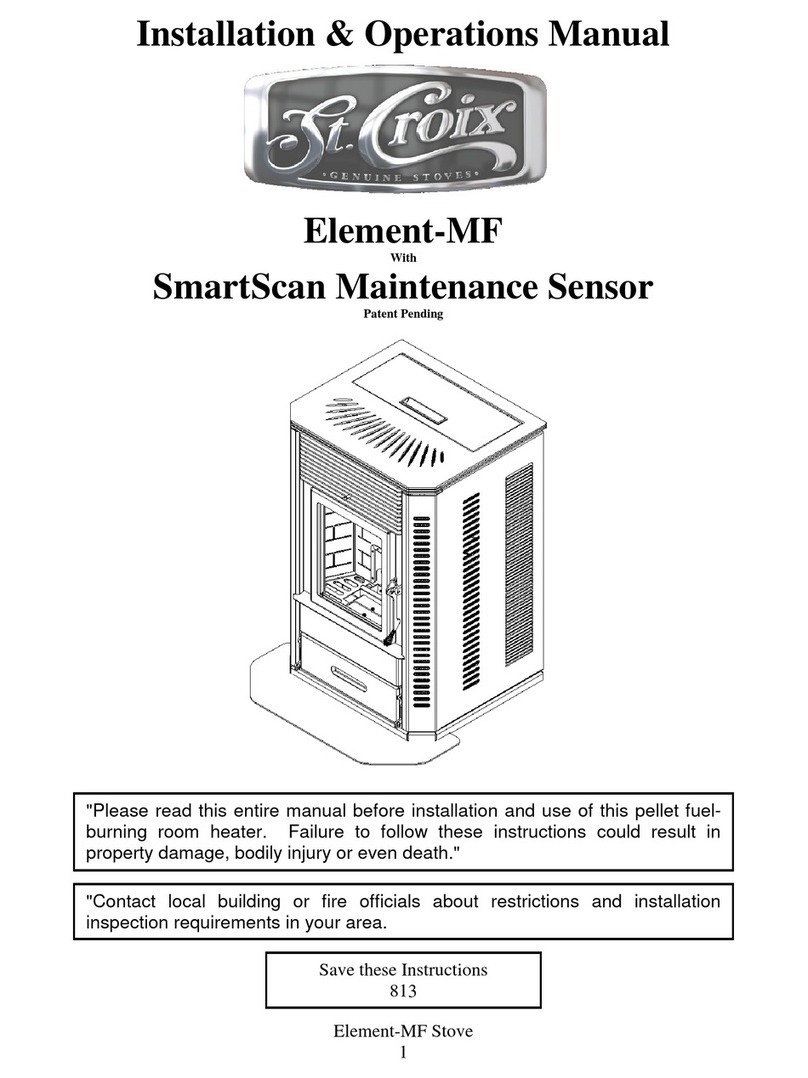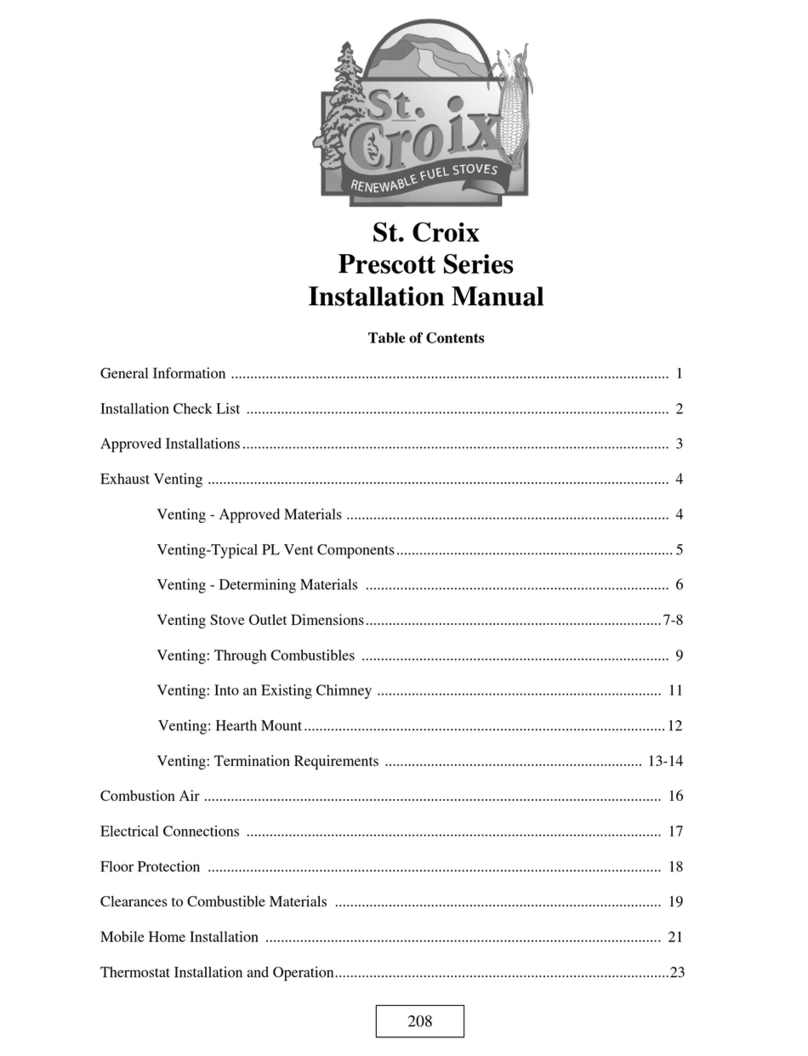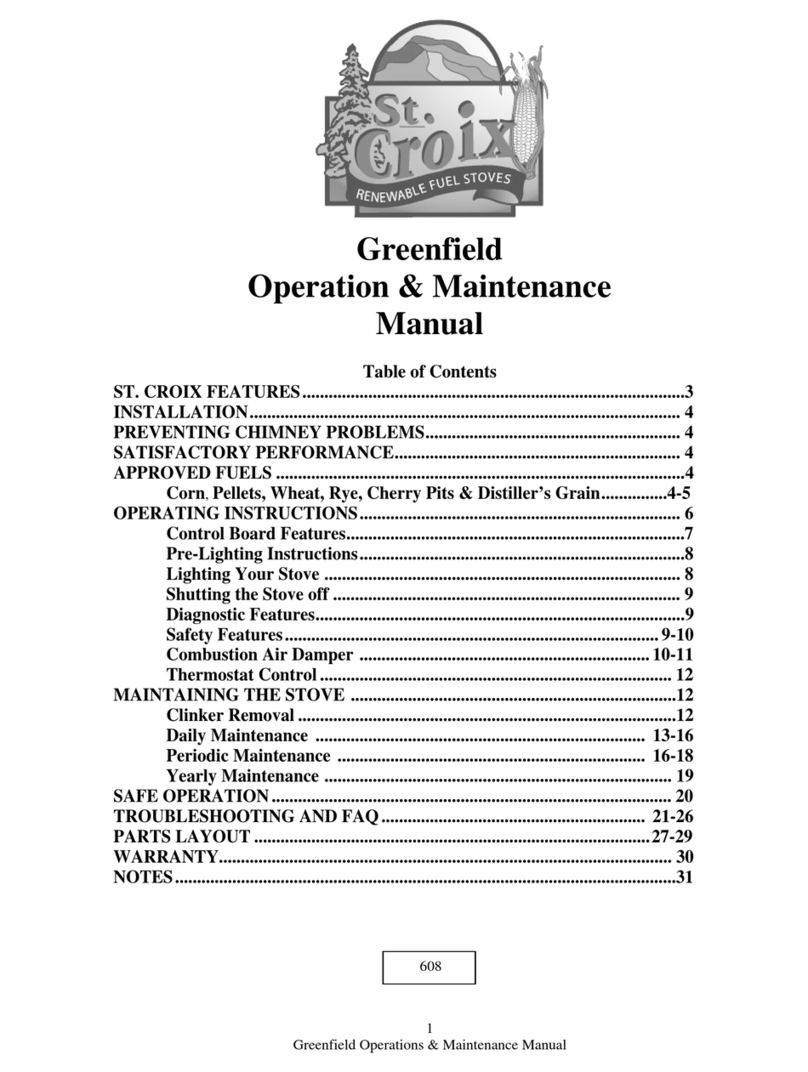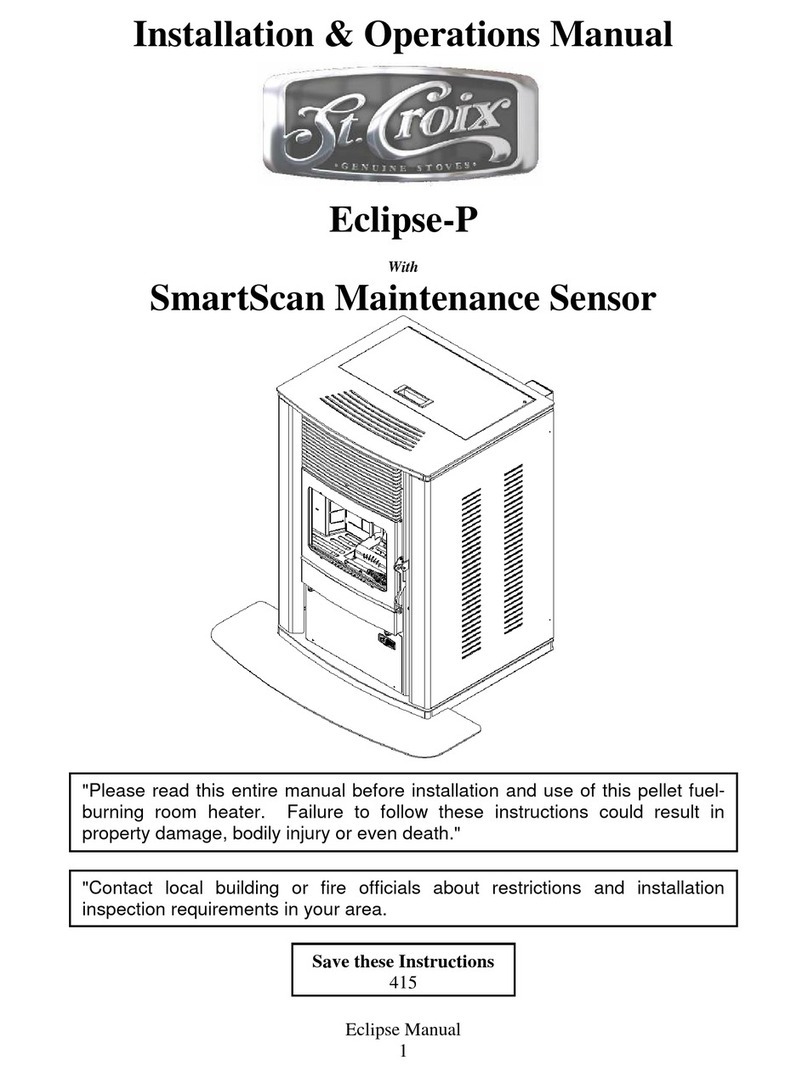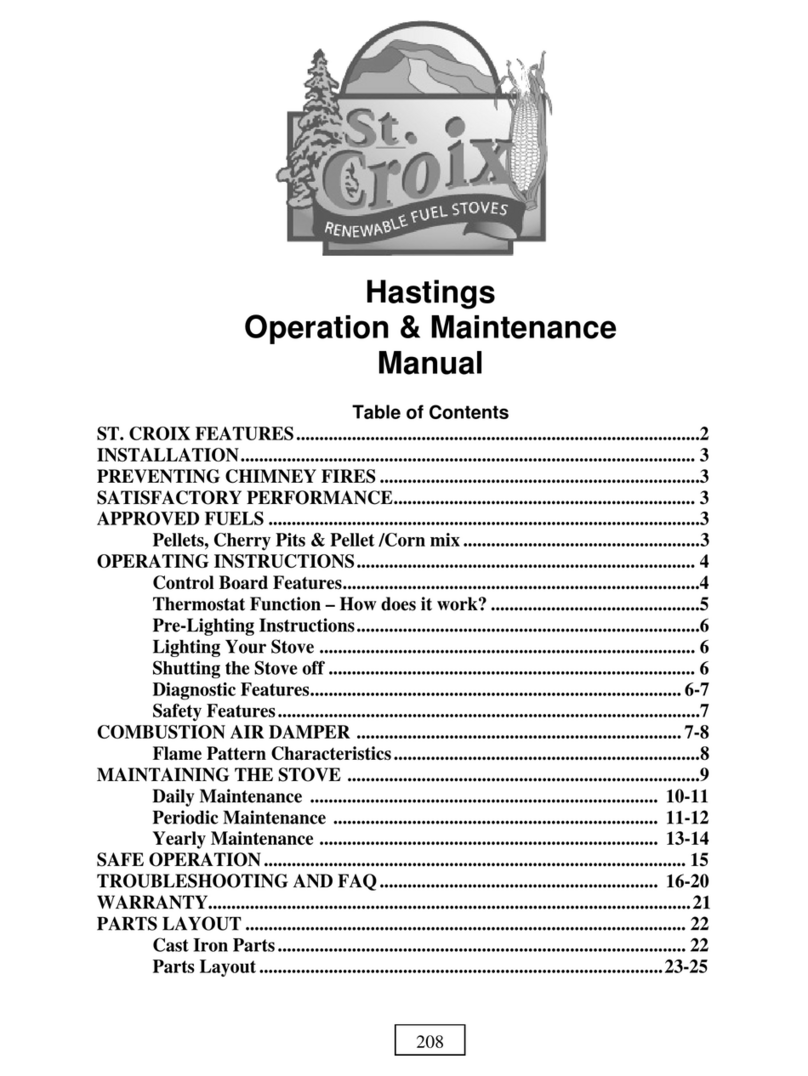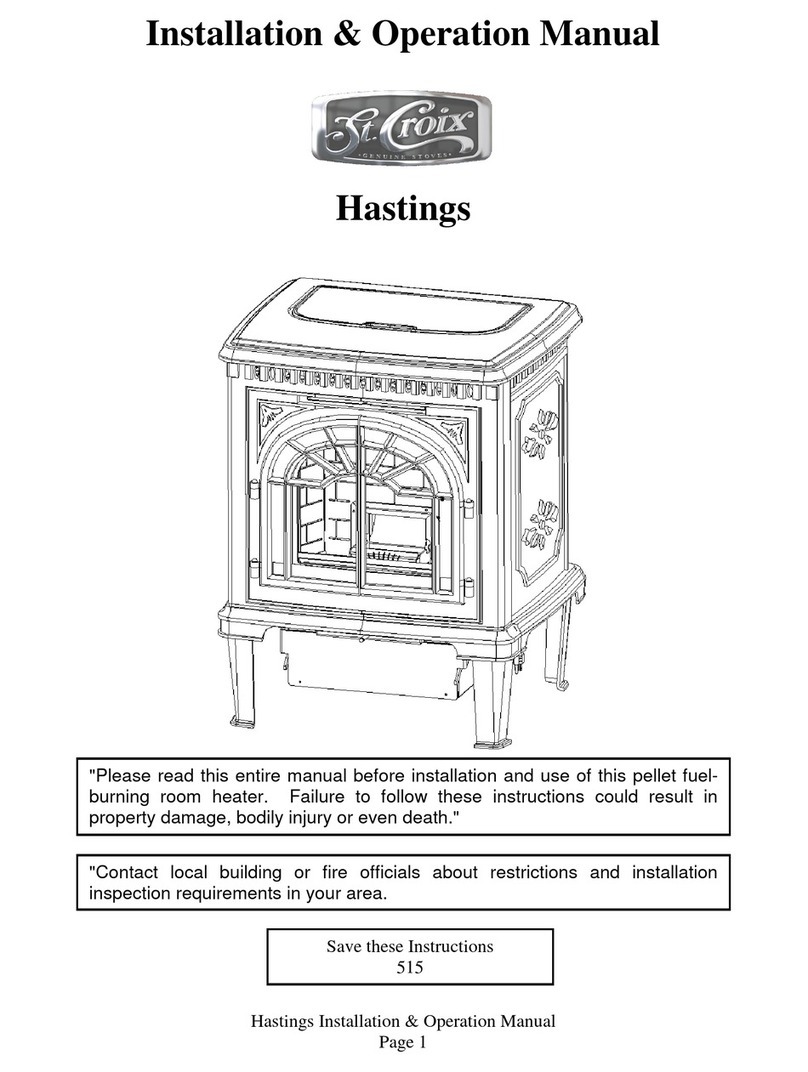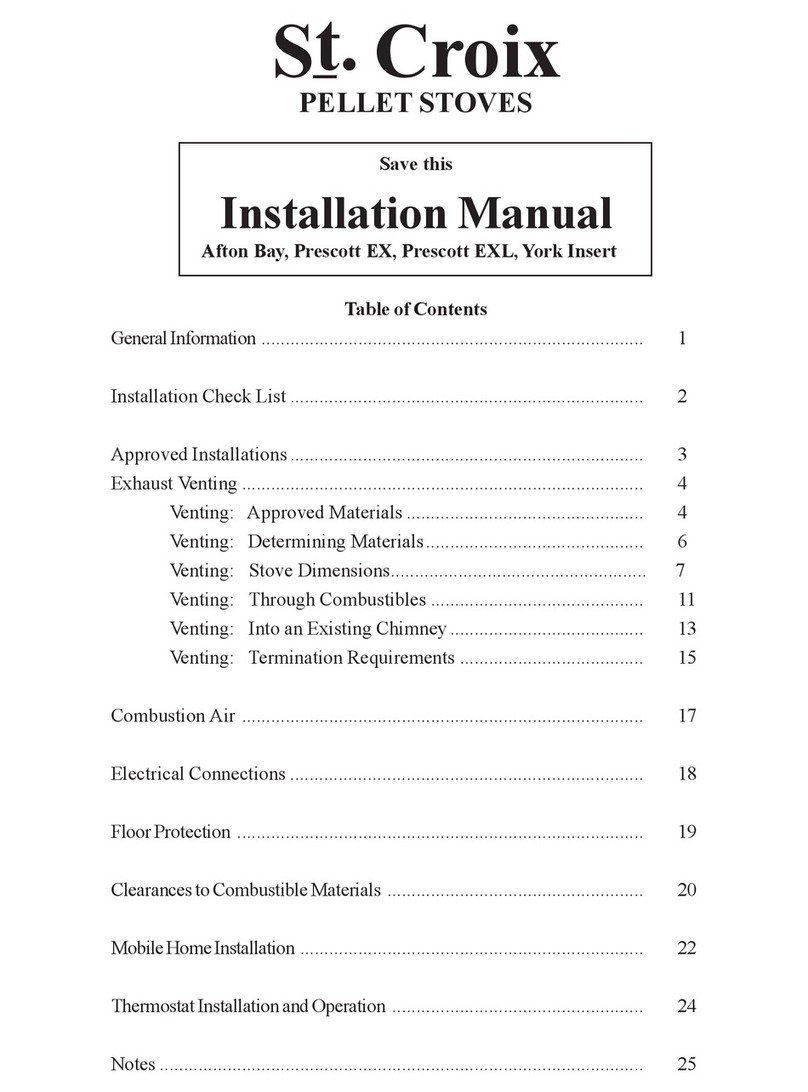
Pellets as Fuel
St. Croix Corn stoves come equipped with a corn pot
installed and this pot is only approved with corn as a
fuel. An optional Pellet Pot may be purchased and
installed in the stove if you want to burn pellets.
Check with your dealer about burning pellets in your
St. Croix corn stove.
Caution: Do not burn pellets as a fuel in a stove
equipped with a corn pot. Optional pellet pot, part
# 80P53784, must be installed to burn to pellets.
PREVENTING CHIMNEY FIRES
Chimney fires can be prevented by properly operating
the Stove and by periodic inspection and cleaning of
the chimney. When wood is burned it produces tar and
other organic vapors, which combine with expelled
moisture to form creosote. The creosote vapors
condense in the relatively cool chimney flue
associated with a slow burning fire. As a result,
creosote residue accumulates on the flue lining. When
ignited this creosote can result in an extremely hot
chimney fire.
The chimney and chimney connector should be
inspected at least once every two months during the
heating season to determine if a creosote build-up has
occurred. If a significant layer of creosote has
accumulated (3 mm or more) it should be removed to
reduce the risk of a chimney fire. Use of an
appropriately sized chimney brush or the services of a
professional chimney sweep are recommended.
The chimney and chimney connector should be
inspected at least once every two months during the
heating season to prevent the system from getting
plugged with Fly ash. Clean the exhaust system if
needed. Use of an appropriately sized chimney brush
or the Services of a Professional chimney sweep are
recommended.
OPERATING INSTRUCTIONS
A different type of heater. The corn stove is
neither a cordwood stove nor a Stove. Its
operation and maintenance differ from the tra-
ditional wood stove. FOLLOW THESE
OPERATING INSTRUCTIONS EXACTLY AS
STATED TO ENSURE SAFE AND RELIABLE
OPERATION.
1. Carefully read this “Operation and Maintenance”
manual in its entirety BEFORE lighting your stove
for the first time.
2. Obtain final inspection and approval of
installation from local building officials.
3. Carefully clean all marks off the gold plated parts
before the first fire is lighted. Use a soft cloth and a
“Windex” type cleaner. Caution: Never use an
abrasive cleaner on any plated or painted parts of the
stove.
4. Have your dealer demonstrate all the operational
and maintenance steps necessary for proper use of
the stove. Sign and return the warranty card, to the
address listed on the back page.
5. Some odors may be given off during the first few
hours of burning during initial break-in. These odors
are normal and not harmful. However, ventilating
the room until the odors disappear is recommended.
6. The stove will become HOT while in operation.
Keep children, clothing and furniture away from all
stove surfaces.
WARNING: Direct contact with the stove while
operating may cause skin burns.
7. To avoid the possibility of smoke and/or sparks
entering the room always keep firebox and ash pan
doors closed whenever the stove is operating.
8. A certain amount of carbon monoxide may be
produced within the stove as a by-product of
combustion. All exhaust vent connections must be
sealed with RTV silicone to assure a gas tight seal.
Any leaks into a confined area caused by faulty
installation or improper operation of the stove could
produce dizziness, nausea and in extreme cases,
death.
9. An outside source of combustion air is required
on all mobile home installations. If room air is used
to supply combustion air, room air starvation,
operation of exhaust fans and icing of air vents can
adversely affect proper stove operation. If these
conditions exist, outside air should be used.
10. Smoke detectors, installed in the same general
area as the stove, may be activated if the stove door
is left open and smoke is allowed to enter the area.
5
Lancaster Operations & Maintenance Manual







